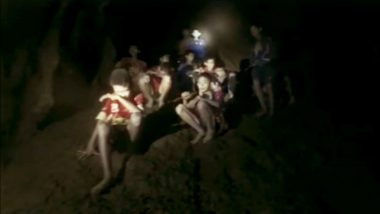After an outpouring of prayers from people all over the world, the 12 Thai boys and their coach has been rescued from the flooded Tham Luang cave by the heroic Thai Navy Seals. The boys and their coach and wandered into the cave and were subsequently tapped by the ingress of the rain water. It took a team of divers and international experts to chalk out the perfect rescue plan in the inhospitable terrain. News reports suggests that the boys, known affectionately as the Wild Boars, are healthy, albeit malnourished and are recovering fast after their dramatic rescue.
Although it may seem like the worst is over for the spirited group, the psychological effects of their ordeal may be just beginning to rear their heads. It is likely that the boys and the coach even came to terms the thought that they may never be rescued as they lay trapped in the cave for nine days. For the longest time, they had to breathe rarefied oxygen, quench their thirst with the water oozing from the rocks and survive on the provision supplied by the rescue team from time to time. Immersed in darkness, the group also had no sense of day and night, which impacts their mental and physiological functions.
But in an incident that makes the boys’ 9-day entrapment seem like child’s play, in August 2010, a group of 33 miners from Chile were trapped in a San Jose mine for 69 days! Their dramatic rescue was also documented in films and group was named as Los 33 (The 33). Barely a day after their rescue, one of the miners have reached out to the children to give them a chilling advice of how life can change after a traumatic incident.
Luis Urza, one of the miners who was trapped underground for 69 days has reached out to the boys and spoken about the hardships the miners have had to endure even after a decade. A Reuters report, Urza said that the survivors saw their relationships break down, their finances collapse and their lives change for the worse. From his accounts, it is evident that the boys’ may have to brace up for more trouble in the days to come.
PTSD or Post Traumatic Stress Disorder
The psychological stress associated with the entrapment may be tremendous. Considering the boys were trapped in a mountain cavern for over a week with little prospects for escape, it’s bound to cause them PTSD or Post Traumatic Stress Disorder. Dr Andrew Adesman, from Cohen Children’s Medical Centre in New Hyde Park, NY, spoke to CBS news who said that the risk of emotional problems in the form of PTSD may be likely in 20 percent of the boys.
The most characteristic symptom of PTSD is re-experiencing symptoms, in a vivid distressing manner. They may experience flashbacks, recurring nightmares and repetitive images or other sensory experiences that may remind them of the event. They could get jumpy, excitable, irritable and sleepless. PTSD sufferers may either think too much about their experience or try very hard to put if off their minds. The boys could also experience anxiety, depression and detachment.
Survivor Guilt
Survivors of traumatic events also experience a curious phenomenon called survivor guilt. It’s a concept related to an interpersonal process of surviving a traumatic event while others didn’t. Although all 12 boys and a coach in this case did live to tell the tale, a Thai Navy Seal, Saman Gunan who was involved in the rescue operation could not. Gunan, who was a petty officer first class, died when he ran out of oxygen during the rescue operation. Symptoms of survivor guilt may mimic PTSD, which includes shame and guilt that others had to die. Although it is not possible to say for certain, in the days that follow, few of the boys could experience sleeplessness, anxiety, sadness and a lack of motivation.
Disruption of the Circadian Rhythm
The boys were stranded in the dark cave and had no sense of whether it was day or night outside. While it may seem like a small inconvenience, effects of being in the dark can be profound. Light is a powerful modulator of our physical, mental and behavioural factors. The process is called circadian rhythm, in which our body responds to light and darkness by altering our sleep-wake cycles, hormonal system, digestion, body temperature and other functions. That’s probably why isolation in darkness is a popular torture technique imparted to unruly prisoners.
Cave explorers, Josie Laures and Antoine Senni, tested how light or the absence of it could alter the circadian rhythm by isolating themselves in dark caves. When they emerged after an average of 100 days, they lost the track of time. Senni once took a nap for 30 hours at a stretch, thinking he had just dozed off for a short while.
In terms of survival and uncertainty, the boys have obviously traversed the toughest part. The team has showed resilience even in the face of such life-threatening prospects. For them, the rest of the coming days could be a challenge with respect to these emotional problems.
(The above story first appeared on LatestLY on Jul 12, 2018 06:54 PM IST. For more news and updates on politics, world, sports, entertainment and lifestyle, log on to our website latestly.com).














 Quickly
Quickly





















